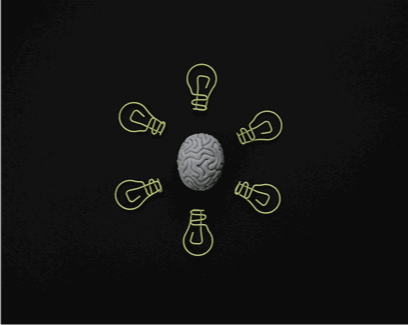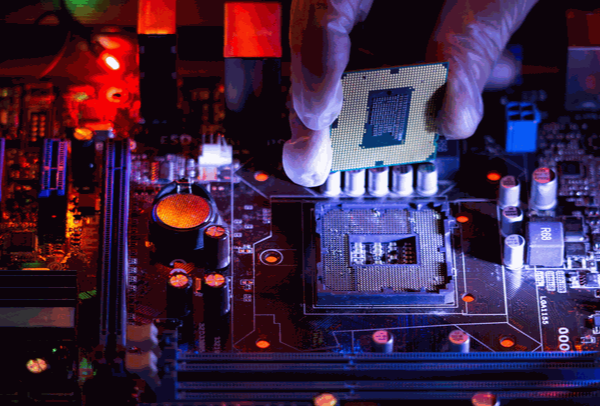Artificial intelligence (AI) has enabled a wide range of modern technologies, from language-savvy chatbots and autonomous vehicles to recommendation systems and voice assistants. This is all thanks to the breakthrough of machine learning, a subfield of AI that trains machines to learn.

Jeff Hawkins, a computer engineer and founder of Handspring and Palm, in the opening chapter of his acclaimed book "On Intelligence," published in 2004, challenged the conventional wisdom about AI.
He argued that many believe AI will eventually be able to deliver on its promises as computing power increases. However, Hawkins argued that AI suffers from a fundamental flaw in that it doesn't grasp the essence of intelligence or comprehending.
A glance at the history of AI and its fundamental principles reveals how the field has lost its way.
In the same book, Hawkins outlined human intelligence as the ability to forecast the future based on previous experiences. And that is exactly what machine learning does.
Exploring the Basics of Machine Learning
Machine learning algorithms enable computers or other devices to analyze problems and find solutions in a manner similar to humans.
What is the difference between machine learning and deep learning?
Deep learning (DL), a new branch of machine learning that employs methods that are even more close to those used by human neural networks than machine learning, first appeared in 2010.Types of machine learning
supervised
unsupervised
but reinforcement machine learning is also a type of machine learning algorithm.
Guided Machine Learning
Algorithms that can "learn" from data handled by a human are used in this kind of machine learning. In other words, in order for supervised machine learning algorithms to generate additional knowledge on their own, the data must first be classified, labeled, and input into the system by a person.
Supervised machine learning algorithms can predict the future and even make complex choices based on the labels that have been applied to the data. This kind of technique can be used with either classification or regression data as input.

Self-Organizing Machine Learning
Unsupervised machine learning algorithms run autonomously and don't need any prior knowledge to "learn" or solve issues. Clustering algorithms and association algorithms are the two categories of unsupervised machine learning techniques. Unsupervised machine learning is used to provide computers with the ability to recognize patterns in messy, unlabeled data sets. The algorithm is in charge of identifying patterns in the data so that it can then come to its own "conclusions."
Interactive Machine Learning
How is machine learning being applied?
Let's look at a few of them. 👇🏼
Smart cars
Vehicles are becoming more intelligent, even though we have not yet achieved "Knight Car" levels. Machine learning algorithms, for instance, are used to create assisted driving. According to a recent IBM study called Automotive 2025, by the year 2025, cars will automatically adjust their radio, temperature, seating position, and other features to the preferences of the driver.
Medical research
One of the foundations of scientific research, particularly in medicine, is machine learning. For instance, machine learning is being utilized for the early detection of diseases such as cancer or various forms of respiratory disorders, which have a better diagnosis when caught early.
Natural language processing (NLP)
One of the most common and beneficial applications of machine learning is in natural language processing.
Folksonomy is one example of a PLN algorithm that can classify information, recognize patterns in the data, and derive inferences from information written in natural language—the language that humans use.
Multiple industries utilize PLN for document management and research based on massive amounts of natural language data. Another application of natural language processing is voice assistant bots.
Personalisation
Personalization is unquestionably one of the most widespread uses of machine learning and artificial intelligence in:
marketing
e-commerce
and any form of economic activity established in the digital domain
Machine learning algorithms are used by businesses to automatically identify consumer behavioral trends and to provide customers with customised content and, particularly in e-commerce, personalized recommendations.
Search engines
Machine learning is also used by search engines to customize their material. Each user receives a different set of results from search engines depending on their past searches, online activity, or demographic information like location.
Try it! Give a coworker a term to look up on Google with their phone, then look it up yourself to check whether Google returns the same results.
Cybersecurity
Additionally, algorithms are used in cybersecurity, particularly to enhance the functionality of antivirus programs, which, by using ML algorithms, improve their capacity for anomaly detection.
Since Hawkins wrote On Intelligence, artificial intelligence has advanced significantly. The author was incorrect, and machine learning, deep learning, and their real-world applications are evidence of this. Machine learning algorithms are increasingly becoming more similar to the human brain, even if machines still cannot think like humans.
How to Differentiate Machine Learning Types and Their Purpose